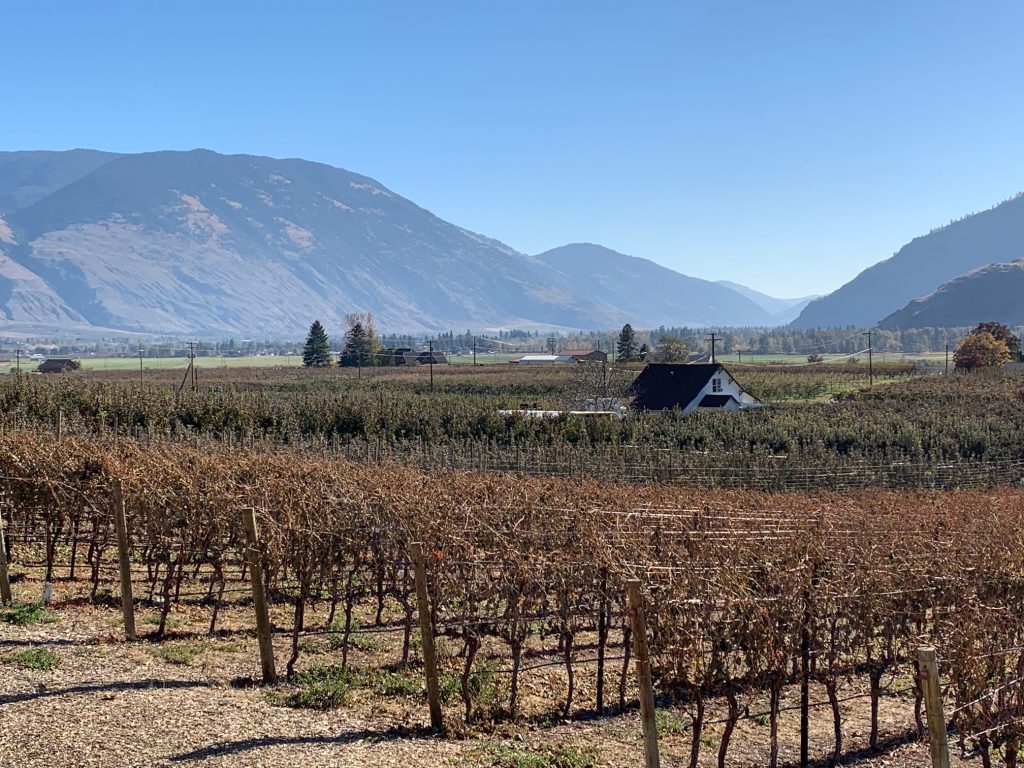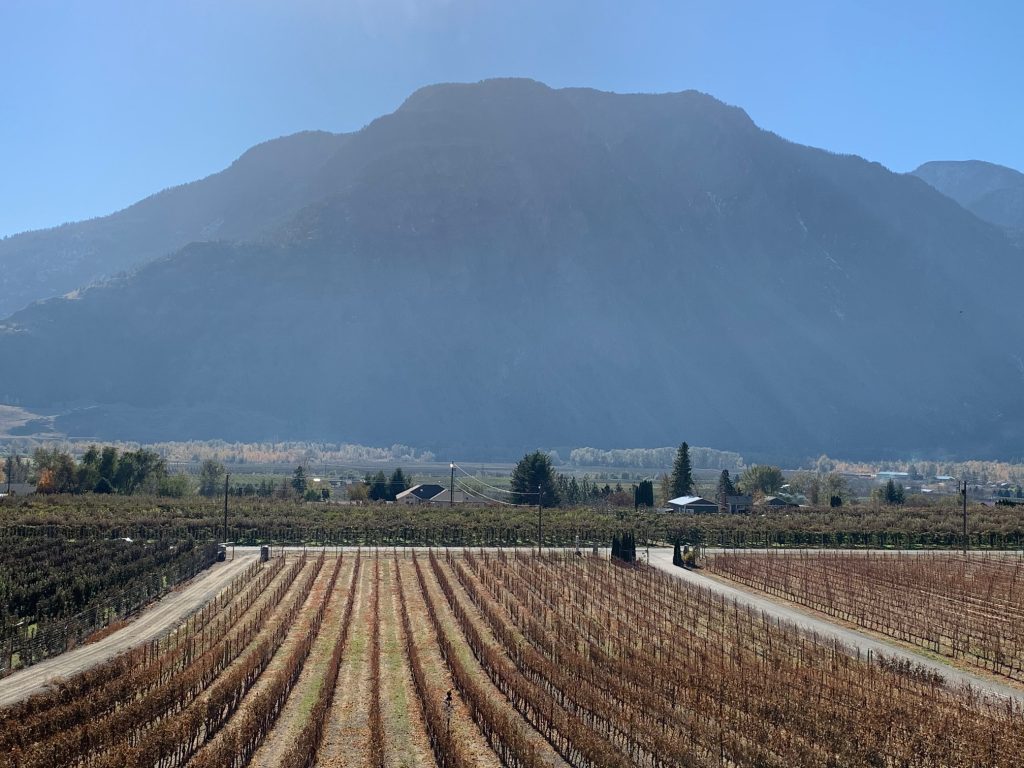
vineyards in the Similkameen Valley
Most visitors heading inland from British Columbia’s coast to the Okanagan Valley – BC’s dominant wine region – take the Coquihalla Highway and Okanagan Connector route. This brings you directly into the Central Okanagan and the region’s largest city, Kelowna.
There is however a more southerly alternative route, which leads to Osoyoos at the southern end of the Okanagan Valley, just north of the Canada–USA border. This is the Crowsnest Highway. Personally, I’ve always preferred driving this spectacular route, as it winds up and crosses through the Cascade Mountains, then weaves back down again into the semi-arid southern Okanagan. On its way down the highway parallels a rather innocuous, fast-flowing stream. Passing through Princeton, it broadens out into the majestic Similkameen River, whose broad bends track the highway until reaching the little farming town of Keremeos. After perhaps loading up with local produce at one of the fruit stands that line the roadway here, most drivers barrel on through to Osoyoos, which is a shame. For you have now arrived in the Similkamen Valley, one of Canada’s newest and most exciting wine regions.
A recent late fall mini-escape to the Similkameen Valley was a revelation. Compared to the nearby Okanagan Valley, the Similkameen is blessedly empty of people – a bonus in these pandemic times. It is also stunningly beautiful country. We stayed in one of several guest suites that are springing up among the fruit orchards and vineyards. The valley is sunny and dry, with less rain (or snow) and more sunshine hours than almost any other wine region in BC. That, plus the persistent winds that blow down off the surrounding mountains, helps keep the vineyards and orchards dry, clean and healthy. No wonder Keremeos claims to be the organic capital of Canada. Most of the farms here practice organic, and some even biodynamic, agriculture.
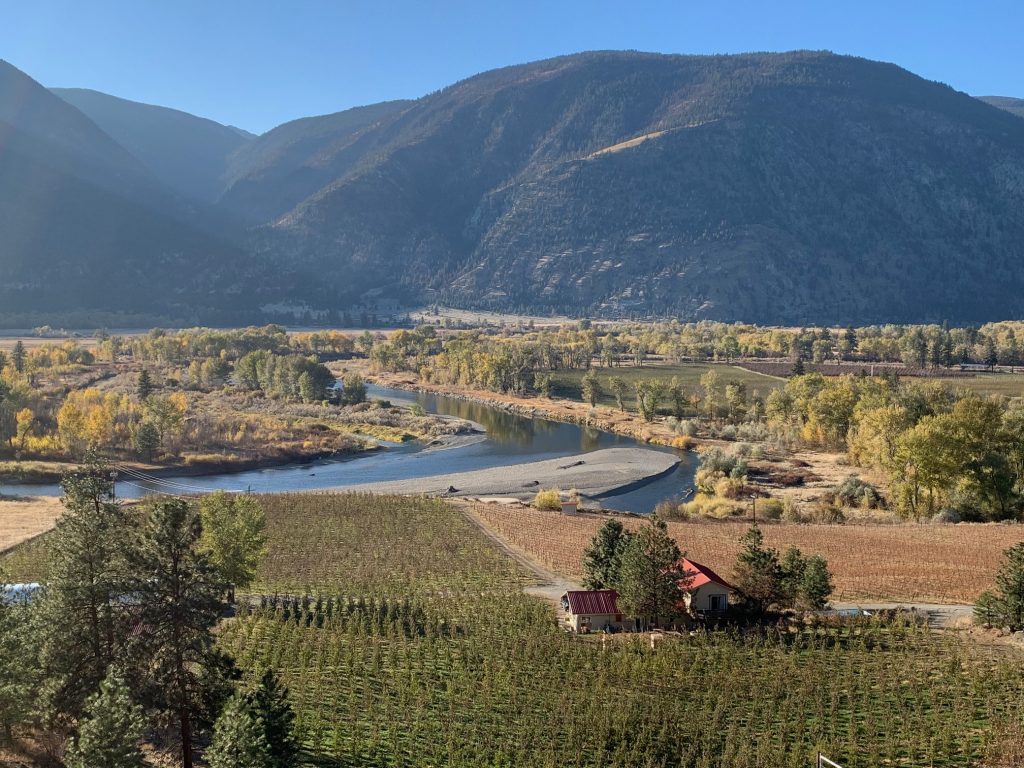
Another factor contributing to the fruit quality is the high diurnal range: while summer daytime temperatures on the valley floor can reach 40 degrees Celsius, the nights are much cooler, resulting in a slower growing season and higher natural acidity in the grapes. This in turn makes for fresh, crisp fruit with generally lower potential alcohol levels. Ideal raw material to make high quality wines.
From a standing start of just a couple wineries a decade or two ago, about a dozen more have since opened their doors in the valley. Most are small-scaled and family-owned. Several are producing excellent wines, from a wide range of grape varieties (this relatively new region does not yet have a distinctive regional wine identity led by one or two signature grape varieties, like say Burgundy or Tuscany do). But there are some indicators of terroir affinity being suggested already: cooler climate-suited Riesling has planted a quality stake in these stony, gravelly soils, as has Sauvignon Blanc, Syrah and even, perhaps surprisingly, Cabernet Sauvignon.
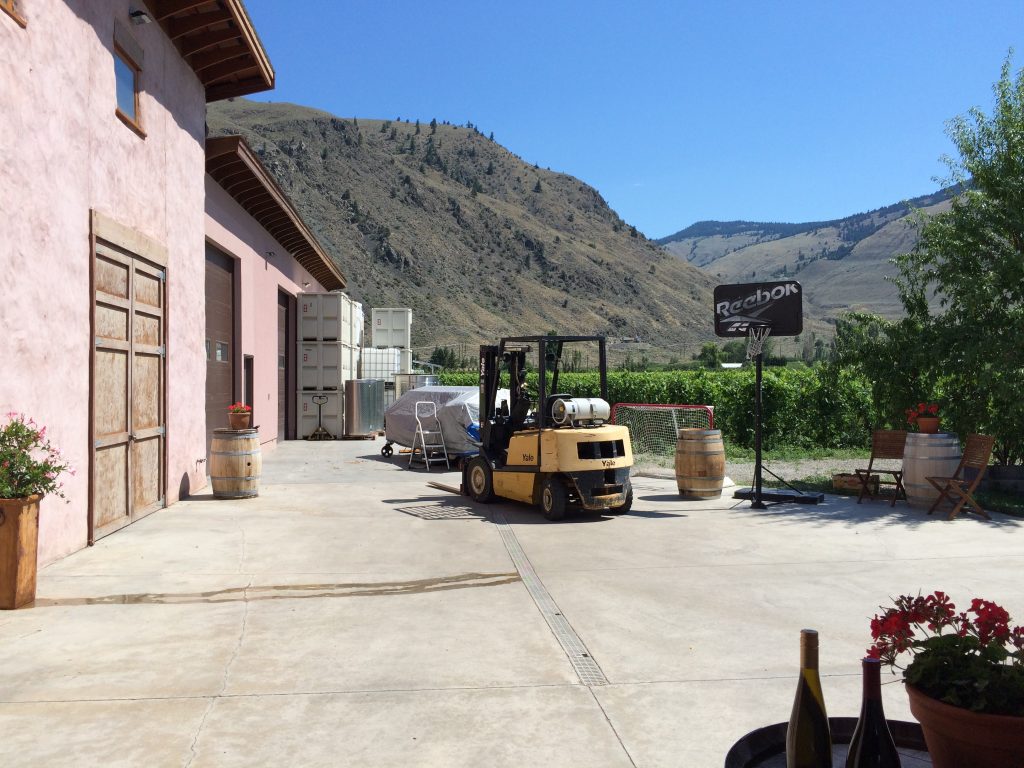
Orofino Vineyards practice low-intervention, vineyard-focused winemaking. They specialize in Riesling (among several other wines) and showcase several bottlings from different vineyards and different clones. The three Hendsbee Vineyard bottlings are each slightly different, with varying levels of dryness, while the Home Vineyard Old Vines Riesling is a powerful statement of place. This vineyard was first planted in 1989, making these some of the oldest vines in the valley. Orofino’s owners, John and Virginia Weber, recently acquired another 10+ acres of prime vineyard land just beneath the steep granite cliffs of the upper Cawston Bench, one of the hottest sites in the valley. They will be adding to the Cabernet Sauvignon already planted there, and also more Syrah. Watch this space, as they say.
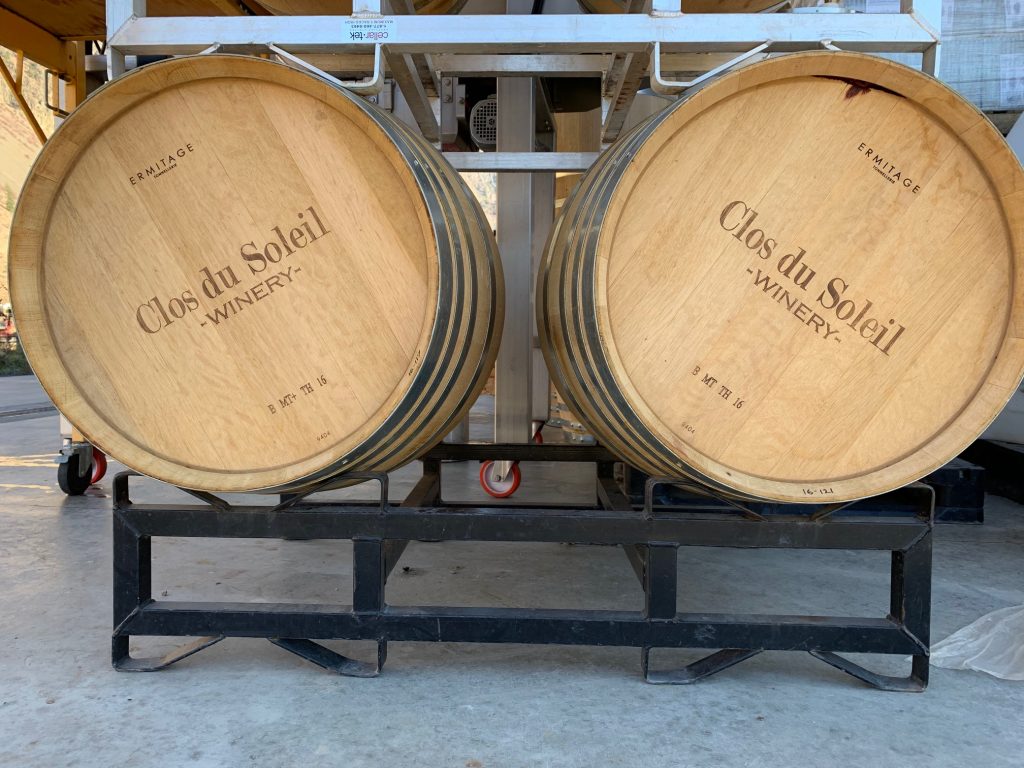
Clos du Soleil is another winery that specializes in Cabernet Sauvignon, as well as the classic white Bordeaux varieties: Semillon and Sauvignon Blanc. General Manager and Winemaker Mike Clark has long been inspired by the great wines of Bordeaux (both red and white), and here on his Upper Bench vineyard sites he is proving that these grape varieties can make complex, classic, elegant wines.
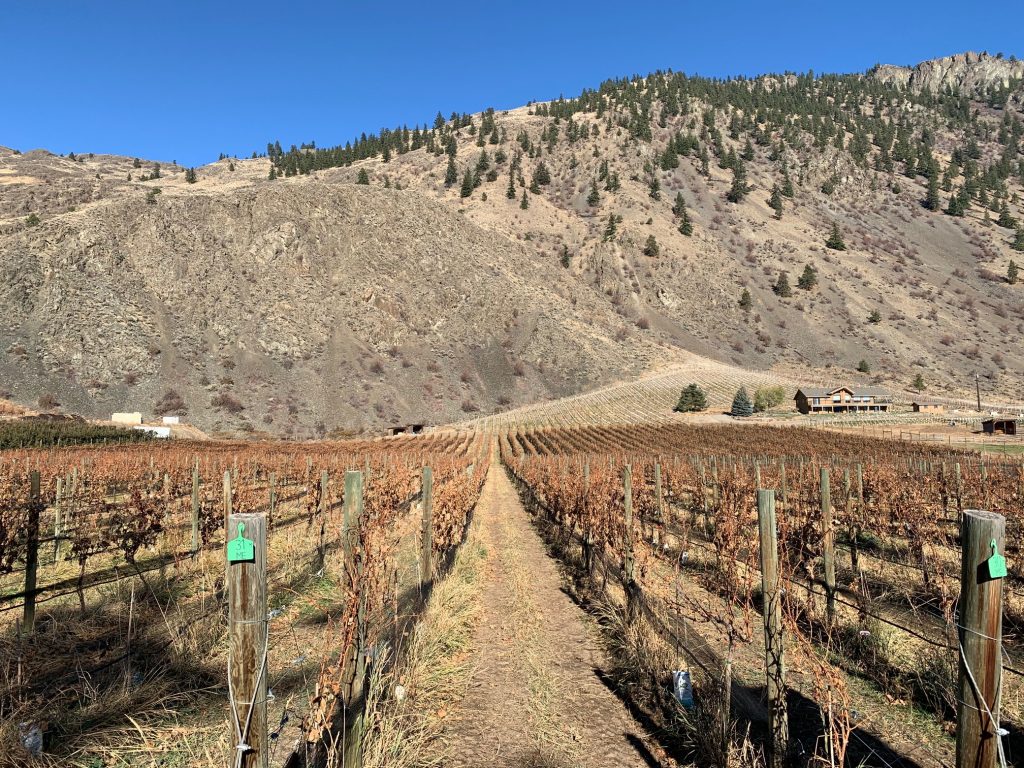
The 2018 Capella is an elegant, fresh white blend of Sauvignon Blanc and Semillon that was partially aged in oak. It needs time to unfurl and evolve. Clos du Soleil is one of the very few wineries hereabouts to make a single varietal Semillon, which tasted fresh, bright, elegant and creamy, with Semillon’s telltale waxiness and lanolin notes emerging. It would be interesting to leave this wine for a few years then taste it alongside some bottle-aged Semillon from Australia’s Hunter Valley.

Clos du Soleil’s red blends range upwards in their Cabernet Sauvignon content from the Celestial (33%) through the Signature (38%) to the Estate Reserve (50%). With five years bottle age, the 2013 Estate Reserve was rich, complex, integrated and layered, with coffee, mocha, tobacco, blueberry and cassis notes. A fine wine.
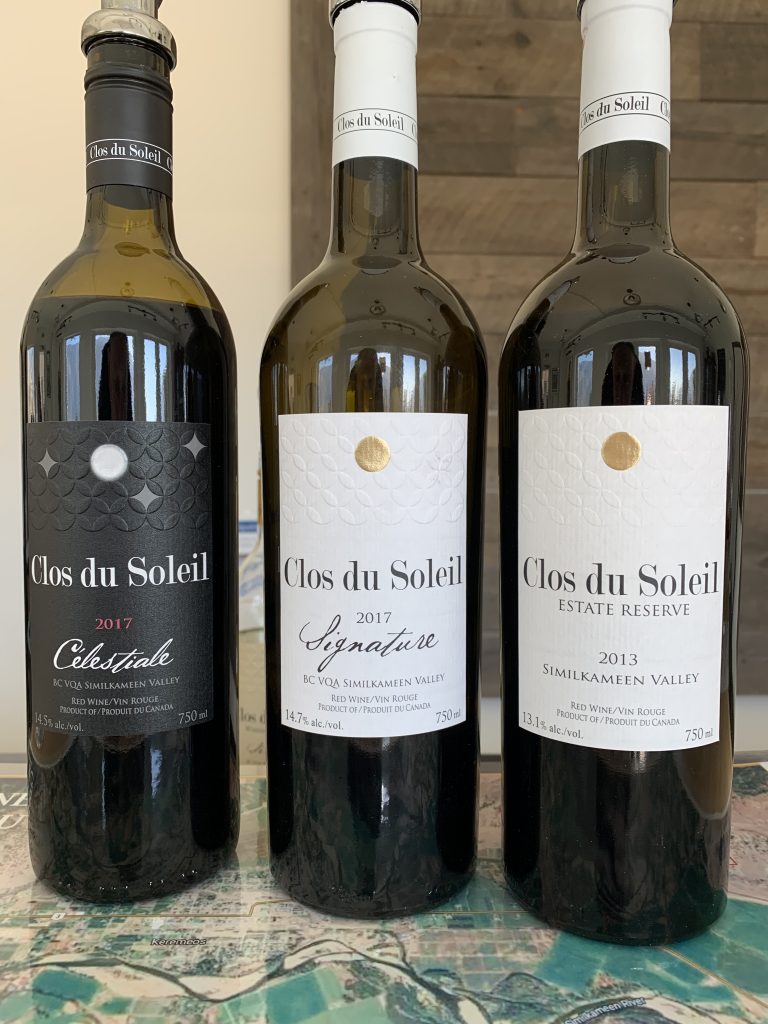
One winery you won’t find listed on the brochure that the Similkameen Independent Winegrowers put out is Little Farm Winery. Owned and run by husband and wife team Rhys Pender MW (yes you read that right, one of a handful of Canadian-based people with the coveted designation) and Alishan Driediger, they are literally too little to have a wine-tasting facility or sales room. So we selected one of their wines to drink with dinner at Row Fourteen, a terrific farm-to-table organic restaurant whose name literally describes its position in the orchard where it is located, just 200 m from our digs. The four-course Harvest Dinner set menu for $50 per person was impressively good value, seasonal and very tasty, especially the dry-aged New York steak.
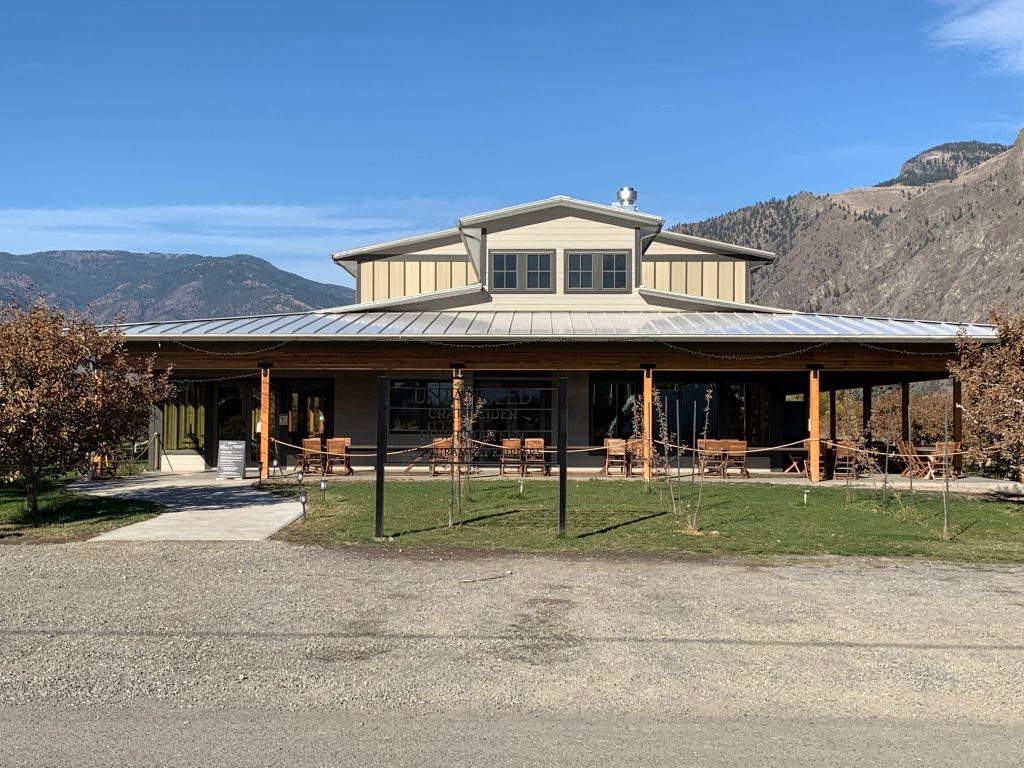
Little Farm aims for minimal manipulation, low-intervention, natural wines, and the Cabernet Franc 2018 Pied de Cuve that we had with dinner was just that: light, juicy, fresh and acidic, but a little lacking in complexity. Made with native yeast that gets a head start in a bucket in the vineyard, it’s unfined and unfiltered, so threw a deposit and was slightly cloudy in the bottle. Commendable for its transparency, and admired by sommelier types, but not everyone’s cup of tea… I personally prefer their impressively poised, lithe Mulberry Tree Vineyard Riesling, with its notable acidity perfectly balancing the Riesling fruit flavours and residual sugar.

Whether it’s a crisp, fruity white, a fresh, summer bistro red or a velvety, serious Cabernet Sauvignon-based blend, the wine options in the Similkameen are growing exponentially. Best of all, the Similkameen Valley remains relatively undiscovered and thus unspoiled, retaining a strong sense of place and authenticity. It is still what the far busier Okanagan Valley must have been like say 30 or 40 years ago. My advice: visit soon!
